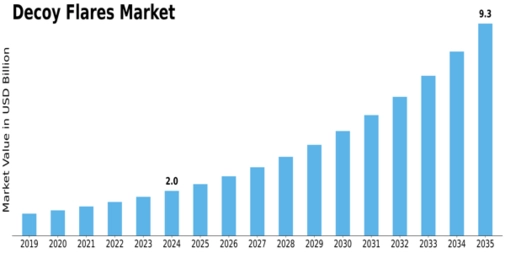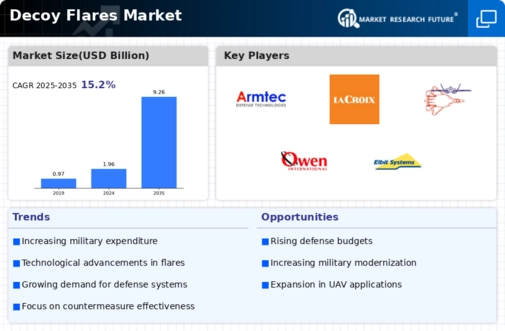Leading market players are investing heavily in research and development in order to expand their product lines, which will help the Decoy Flares market, grow even more. Market participants are also undertaking a variety of strategic activities to expand their global footprint, with important market developments including new product launches, contractual agreements, mergers and acquisitions, higher investments, and collaboration with other organizations. To expand and survive in a more competitive and rising market climate, Decoy Flares industry must offer cost-effective items.
Manufacturing locally to minimize operational costs is one of the key business tactics used by manufacturers in the global Decoy Flares industry to benefit clients and increase the market sector. In recent years, the Decoy Flares industry has offered some of the most significant advantages to medicine. Major players in the Decoy Flares market, including Armtec Defense Technologies, Mil-Spec Industries Corporation, LACROIX, Ordtech, Owen International, Premier Explosives Limited, Rheinmetall AG, Rosoboronexport, Elbit Systems Ltd., and TARA Aerospace AD, are attempting to increase market demand by investing in research and development operations.
Manufacturer of aerospace and defense goods is Northrop Grumman Corp (Northrop Grumman). Unmanned systems, aircraft, autonomous systems, cybersecurity, command, control, communications, computers, intelligence, surveillance, and reconnaissance (C4ISR), logistics, and modernization services are all included in the company's product range. The aerospace, defense, electronics, and information systems industries can all benefit from Northrop Grumman's solutions. It produces wireless communication infrastructure, mission-critical computer systems, spacecraft systems, and acoustic sensors for aircraft carriers and submarines. The business provides goods and services to commercial clients in North America, Europe, and Asia-Pacific as well as to international, state, and local governments.
Falls Church, Virginia, in the United States, serves as the company's headquarters. The U.S. Air Force awarded Northrop Grumman Corporation (U.S.) a contract of US$ 355 million in October 2018 to create new flares for the F-35 Lightning II aircraft.
Defense contractor and systems integrator BAE Systems Plc (BAE). The business offers solutions for air, land, and maritime security, aerospace, and defense. Advanced electronics, cybersecurity, and intelligence products are among BAE's offerings, along with information technology solutions and support services. Military aircraft, space systems, surface ships, submarines, avionics, radars, command, control, communications, computers, intelligence, surveillance, and reconnaissance (C4ISR) systems, electronic systems, torpedoes, and guided missile systems are all products that the firm develops, produces, and sells. Both the government and business clients are served.
The corporation has operations throughout Central and South America, Africa, the Middle East, North America, and Asia-Pacific. London, England serves as the home base for BAE. The U.S. Navy granted BAE Systems a contract worth US$36.7 million in 2019 to create and test a dual band, next-generation Fiber-Optic Towed Decoy (FOTD) that will shield pilots and aircraft from cutting-edge threats.









Leave a Comment